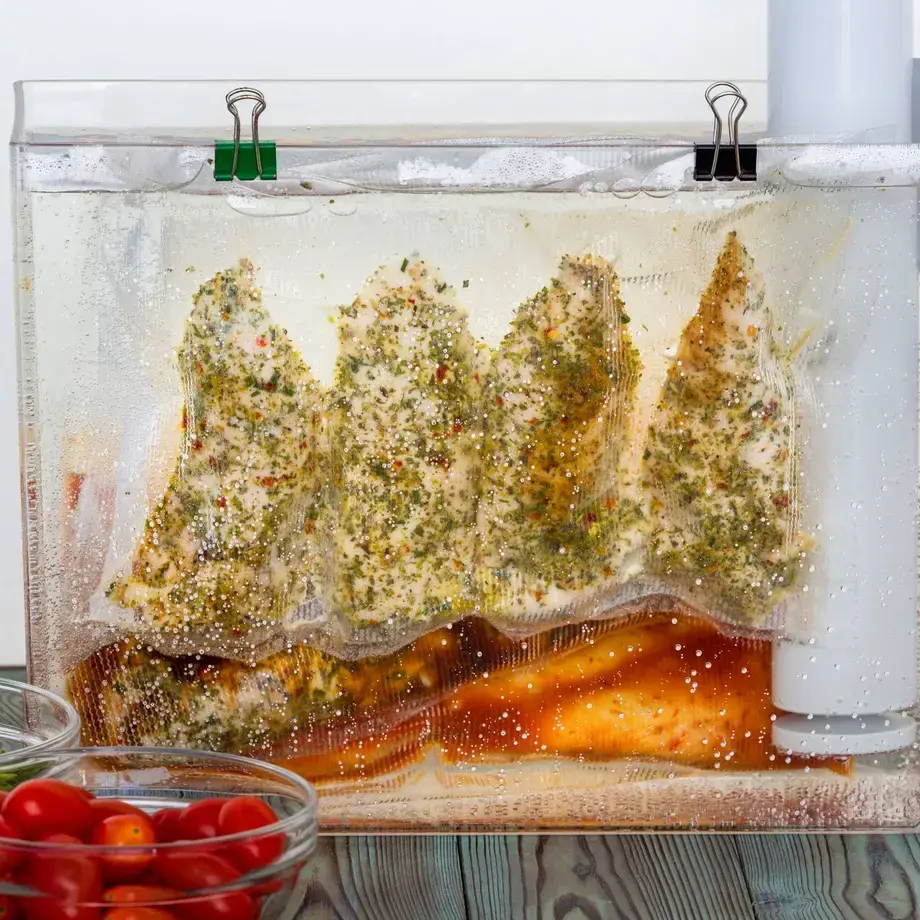Dr. Bruno Goussault, the father of sous-vide, has just been awarded the Lifetime Achievement Award (Fauteuil de l’Academie) by the USA Chapter of the Académie Culinaire de France. We asked him to answer FDL readers’ burning sous-vide questions.
As the chief scientist of Cuisine Solutions Inc., a leader in pioneering and perfecting the sous-vide cooking technique, and the founder of the Culinary Research & Education Academy (CREA), Dr. Goussault is widely considered to be the founder of modern sous-vide cooking. He has trained over 80% of the three-Michelin-starred chefs around the world in the art of sous-vide, including Yannick Alléno, Heston Blumenthal, Daniel Boulud, Thomas Keller, Anne-Sophie Pic and Joël Robuchon. He sits on the board of the Association des Chimistes and Ingénieurs et Cadres des Industries Agricoles et Alimentaires in France, and was also named one of the 100 visionaries in the Albert Einstein Legacy Project’s Genius: 100 Visions of the Future initiative.
The Lifetime Achievement Award is given to those whose life’s work has a truly lasting effect on the culinary world as a whole. Here, Dr. Goussault answers Fine Dining Lovers readers' questions:
How much do you use sous-vide at home? And what for?
I always use the sous-vide method at home as long as I have the equipment. I use it because I believe that products cooked sous-vide are better, especially when you need to reheat and prepare your dishes.
Can you share your favourite sous-vide recipe with us?
My favourite recipe to cook sous-vide is an assembling recipe with three bags of products. The first bag contains a lamb shank, the second bag contains beans and the third bag contains sauce with garlic extract.
Garlic - should it be pre-cooked before you sous-vide? Is there any use for it in the bag?
It is not necessary to precook garlic before you pack it sous-vide. Vegetables need to be cleaned and disinfected in water with vinegar before you pack them. As garlic is a vegetable this process applies.
I prefer to just add salt and pepper to meat and fish to preserve the real flavour of the product. If you sous-vide the garlic with the lamb, the flavour of the lamb will dissipate which is not my goal. Cooking the lamb and the garlic separately and marrying them together at the end allows for each product to keep its true flavour.
Some say garlic over a long time, uncooked, can cause botulism. Is this true?
I do not believe this is true. Because when you do a study on the effects of garlic the conclusion is that garlic, or garlic extract, blocks the germination of spores of clostridium botulism and the germination of all spores. I prefer to use the right level of garlic to proceed with the extraction of garlic followed by cryoconcentration, that way I can put of a drop of concentrate when I reheat the base for assembly.
There are so many different opinions on how to cook the perfect sous-vide egg, but for you which is best?
For me, the perfect egg is when you obtain the same viscosity between the egg yolk and the egg white. After many studies, I have found that the time and temperature of a perfect egg is 45 minutes at 63.2 degrees Celsius. After speaking to my friend and top chef, Joël Robuchon, he explained that at this temperature of cooking his 'oeuf cocotte' he obtains the best colour and texture for the egg yolk.















